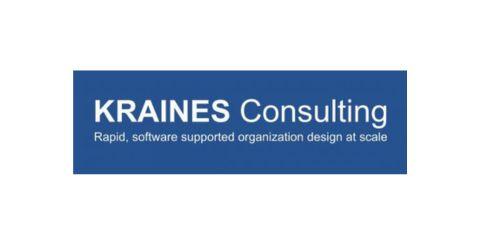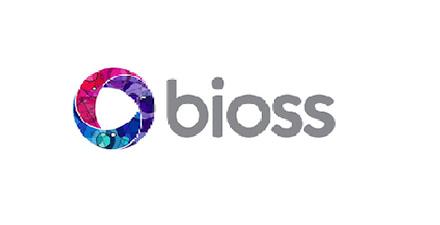Managerial Leadership Practices: What are the responsibilities of an HR department in implementing RO?
- Terry: You have to educate the managers while you're also educating the human resources people. He says at least half of his staff was completely trained in understanding about task assignment. And that's hard for human resources in the United States, he says.
- HR people really get an interesting challenge in this. It's not their problem to fix managerially. They don't have the accountability for it. Requisite is a total management system. HR should try and be the internal consultant. It takes five years to do these kinds of implementations.
Speaker A From my experience, Nancy laughed because we have had lots of interesting challenges in this regard. It is not a human resources. This is managerial work. And the accountability of the human...
Transcript of the presentation video
NOTE: This transcript of the video was created by AI to enable Google's crawlers to search the video content. It may be expected to be only 96% accurate.
Speaker A From my experience, Nancy laughed because we have had lots of interesting challenges in this regard. It is not a human resources. This is managerial work. And the accountability of the human resources department is to lead the education effort in conjunction with the managers and also to provide the appropriate level of internal consulting when the problems come up as you begin to go through the process. So the challenge in human resources, at least in the United States, is that most people who are in the training department or who are in what we call recruiting, but I'll concentrate particularly on training. They are educated to deliver training and to say this is how you do this. But they're not necessarily of an appropriate level or educated in terms of the consulting piece of it. And that is very different work. So in a human resources department you have to have someone at the appropriate level of capability who can begin to understand what the problems are that the managers begin to come back to you with as they work through this process. Which is why, for example, that I spent some time talking about what is the verb in terms of task and key accountability assignment. Because very often that's one of the places where human resources will get involved because a manager will want to pay a role differently. They'll want to hire a new employee and they want to name that role by a different name. And so you have to have human resources people who can understand this system enough that they can help a manager get very clear. Terry and I both worked. I was a vice president of HR and in my flesh job before I became the internal consultant in this work. And I made sure that at least half of my staff was completely trained in understanding about task assignment and understanding what managers have the accountability and authority to do within this system. But I was also very clear with managers and both human resources, particularly with my staff, I would call it, don't take the problem as yours, make sure that you're able to work with that manager if they understand that in fact this is their work. And that's hard for human resource people in the United States because we are educated to be problem fixers. So I'll just come and fix the problem and managers are very happy to give them to us so I don't have to do my managerial work right? They're happy to do that. This is the essence of the problem. And so you have to educate the managers while you're also educating the human resources people. Because it's very difficult for a human resources person who's used to being incredibly servant oriented to say I can hand that back to the manager and I can help them, I can provide a space for them to understand this is how you write accountabilities or this is how you coach. And we'll get into feedback and coaching this afternoon, which is where HR people really get an interesting challenge in this. It's not their problem to fix managerially. They don't have the accountability for it. They have the accountability for making sure that the system is there and the appropriate legible of education is there and the human resources systems are there. What we used to fondly call in the bank, page 131 in the Requisite organization book. Page 131 is all about the human resources systems that have to be underlying everything that you need in place. That's where I spent my time with human resources over the last five years because you have to get them ready, almost separate project as you're getting the managers ready in terms of these kinds of systems, which is why it's culture change, why it takes five years to do these kinds of implementations.
Speaker B So I agree with what Sandy said. However, the academic side of it, so the purest side of it, remember, we're in a management system. It's a total management system. So we're talking about managerial practices. There's also the idea that the CEO has decided that we're going to implement this management system within the organization. They have direct reports, some of those may be HR buying people. They're to work together as peers. There's a tier relationship. When you understand Requisite, there's tier, which is task initiate, cross functional working relationships. And what we're hearing here is that HR would have a coordinative relationship with respect to implementing this. The coordinative relationship means they coordinate, they plan meetings, they get people involved and they would move it forward with the authority of the CEO. It's that authority that they're using. When they come to a barrier, they try to solve it. If they can't solve it, they would escalate it. So again, we're here talking about one element of Requisite and it is so difficult because it is a total management system. So when you come to a barrier, there is another workaround to get the problem solved. Again, HR should try and be the internal consultant so that there's no need in the future for external consultants. But again, it may be the style of the organization. Sometimes HR is looked at as a service provider. They're not looked at as a strategic partner with my organization. So it is a cultural change. So it is a top down driven change. If you don't have top down, it's going to take you a long time and you're going to be a very frustrated human resource person.
Major organizations and consulting firms that provide Requisite Organization-based services





